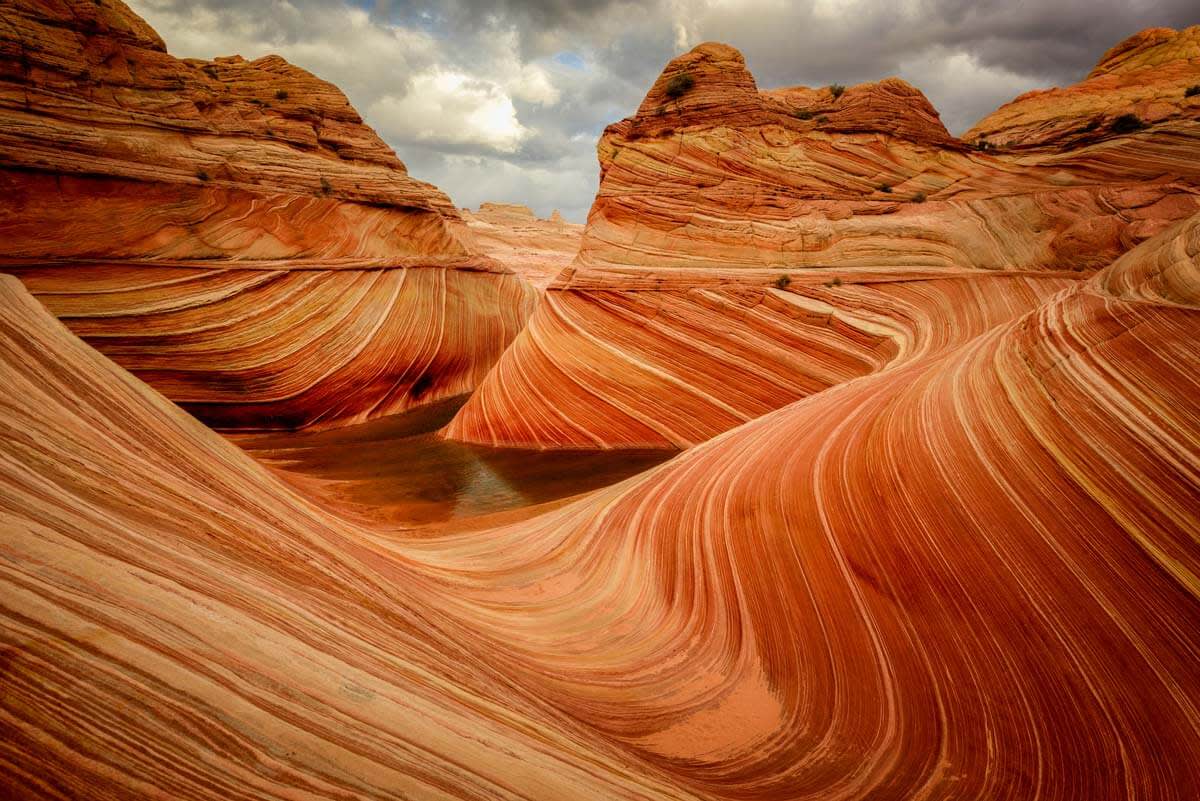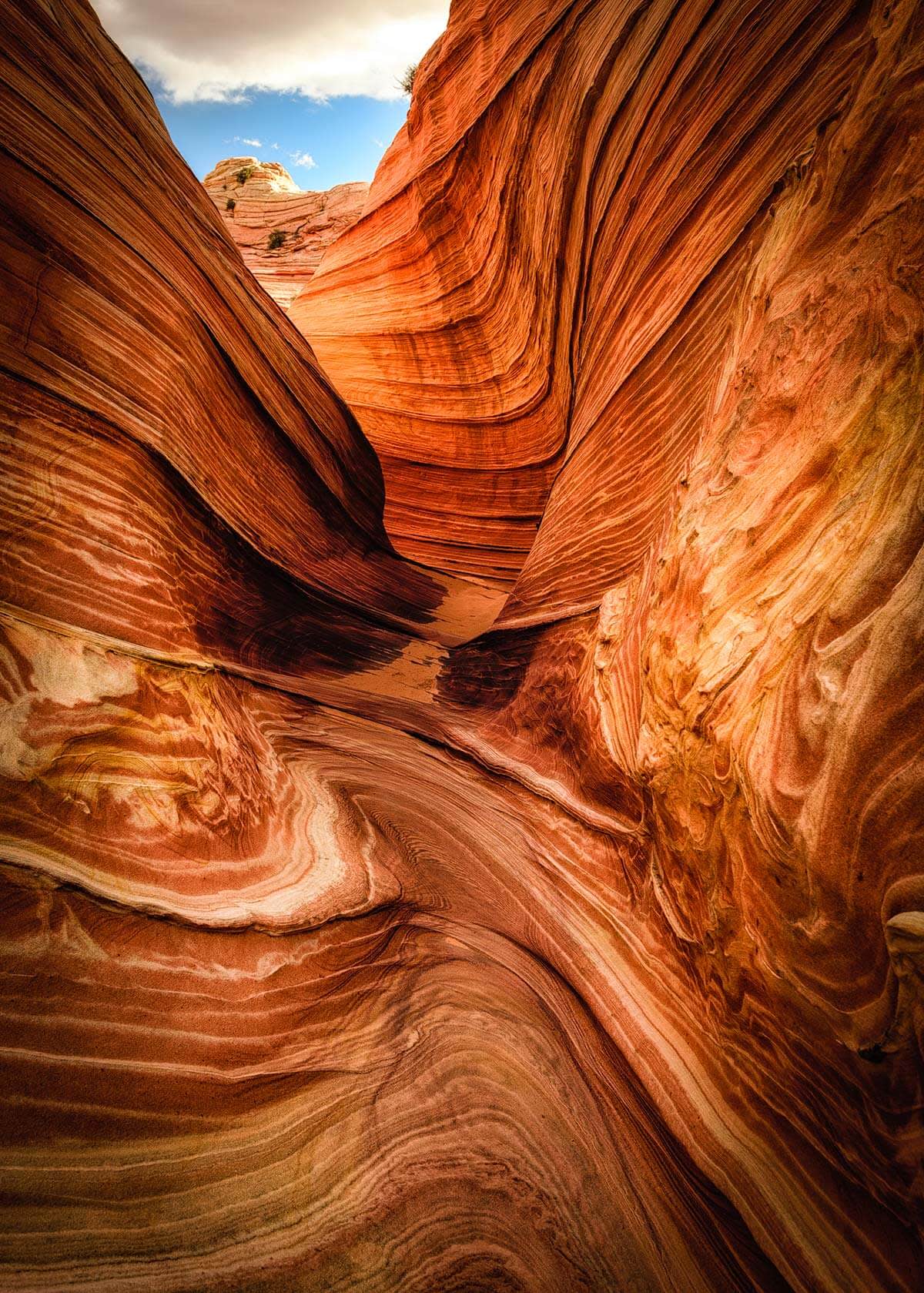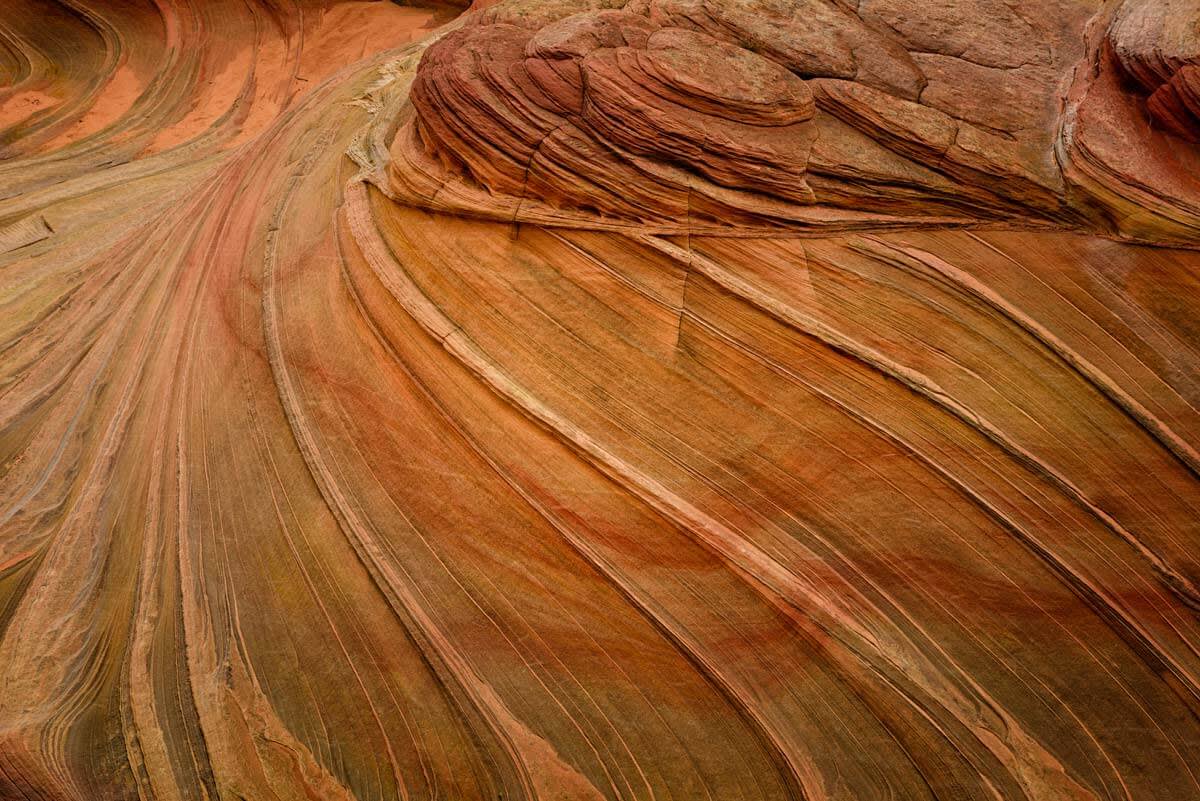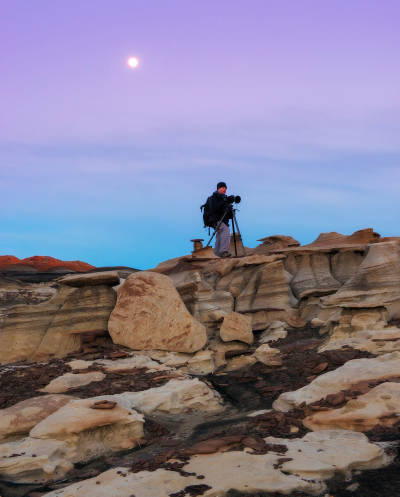Spread across a small swath of northern Arizona, west of Horseshoe bend and east of Zion National Park is an area of otherworldly geological formations that have been eroded by sand, wind and water over thousands of years. The Northern Coyote Buttes area hosts one of the most iconic of such places: “The Wave.”
A not-overly-difficult hike of about three miles belies the confusing nature of the terrain, as well as the simple difficulty of obtaining a permit in the first place. At peak travel times, there can be over 150 people applying for the ten available online permits, as well as large groups vying for the other ten pulled at a daily lottery. But once there, the experience is like no other.

Sunrise along the hike to The Wave, iPhone 6+. My 9-year-old always gives me one of her friends to travel with on my excursions. Spike has been to Namibia as well.
When ultimately reaching The Wave, my first thought was how sharp the various edges were in the folds of rock that undulated through the cathedral that makes the center of the formation. My second thought was how the unnaturally orange and red colors permeated throughout and created a fantastic, almost unnatural palette.
My next thought was hoping I wouldn’t screw up my photos, as I wasn’t sure when my next opportunity would be to come here. Some of my photographer friends have been waiting over five years to win the lottery to come!

Nikon D810, 14-24mm f2.8. The widest lens I have was almost not wide enough to complete the curves at the bottom right.
To mitigate the screwing-up thing, I had studied various pictures of The Wave online, and mapped out a few shots I knew I wanted. But most of those ideas I had to throw out for a few reasons. First, I didn’t anticipate how small the area actually was. This made lens choice a bit difficult, as the Nikon 14-24mm f2.8 would bend the stark lines, but would be needed to get both close to the foreground lines and wide enough to include them and make more impact by filling the scene.
Second, the wind and snow made for difficult conditions. To get the foreground leading lines sharp as well as the background, I needed to focus stack (see previous articles) which is difficult if your tripod is getting buffeted by hurricane force winds.

Nikon D810, 14-24mm f2.8. Slightly side view of The Wave, with small pool at its bottom and great clouds giving depth to the sky.
I also had a difficult decision regarding composition. There is an iconic shot of The Wave, and I didn’t know if that would be interesting, since so many people have taken it. A good friend of mine said you should always take an iconic shot, because you can both learn from it and have a shot that is your shot.
So I took it and love it, but more importantly, by thinking this way, I noticed the pool of water at the bottom of the bowl, and the reflections of the lines in the water when the wind died down. And that led me to a more unique interpretation:

Nikon D810, 14-24mm f2.8, A small pool of water provided surreal reflections when the wind died down.
Next, there is a brownish discoloration in the foreground that using something like PicMonkey’s Clone tool, I could get rid of. It looks a bit like a smudge and disrupts the clean lines. Should I clone it out, or leave it natural?
I usually err on the side of “leave it natural,” so the smudge is there. I usually only fix technical problems like cloning out wet spots on the lens or cropping away edges of the image that look out of place, but never really changing what was there. Or I change my composition while I’m there, which you can see in the second shot.

Nikon D810, 14-24mm f2.8. A natural shot of The Wave with the natural “smudge” embraced.
After getting a number of iconic shots under my belt (and the unique ones with the reflection), I turned my attention to studying the more abstract lines and patterns. I wanted an image that disrupted the viewer’s sense of place.
As mentioned above, creating a leading line composition required focus stacking to get the patterns flowing through the entire picture. This was very tricky, and ultimately interrupted by a massive wind and snow storm that forced us to take shelter in an overhang.

Nikon D810, 80-400mm f4.5. Zooming in to create abstract patterns.
But that was a boon, as I discovered the small canyon off to the left of the main Wave that resulted in a completely different take of the area. The melting snow also oversaturated the rocks and pulled out great colors that weren’t there before. I waited for the background to be lit up as the clouds cleared, and pulled out some contrast and applied a vignette to create the final shot.

Nikon D810, 14-24mm f2.8, A path leads through to The Wave and is lit by a gap in the clouds.
Moving back out to the top of the Wave, I attempted to create an overview shot, but found that either the tops of the cliffs were uninteresting, or the lines became so small that it didn’t capture the drama my eye was initially drawn to. So I moved back in with my telephoto, and found this abstract composition by compressing the rock layers and keeping the faraway tree clinging on through the harsh conditions:

Nikon D810, 80-400mm f4.5, using a longer lens to compress the layers.
We hiked a bit further south to Second Wave, but a full-out blizzard with massive wind gusts kept us from doing anything but huddling behind a rock formation and breathing into cupped hands to keep warm. While it resulted in an unshareable image, the rest of the experience left me with a deep connection to the place and giddy excitement for seeing my images on the computer.
The only trick was finding our way back, which was made easier by the forethought of a friend who had marked GPS coordinates at every turn. Some hikers get so lost here they are stranded overnight; but we had no such drama and soon we were back at the car and off into the fading light back to our hotel. I’d absolutely go back again (if I can win the lottery)!

Nikon D810, 14-24mm f2.8. A quick closeup shot of Second Wave in between wind gusts and blinding snow.
